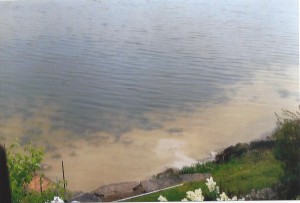Stormwater management
Scugog Lake Stewards presentation to Scugog Township Council regarding the need for additional stormwater management infrastructure.
December 15, 2014.
The Scugog Lake Stewards are devoted to the in-lake health and welfare of Lake Scugog. Our focus is directed specifically at the lake’s sustainability, its usability and its aesthetic qualities.
In contrast, the Township, Region and Kawartha Conservation are responsible for on-land nutrient management and silt/sand reduction.
Excess nutrients (phosphorus and nitrogen) as well as increasing loads of silt and sediment are the base causes of why our lake is aging quickly.

While we acknowledge the new Council’s stated focus to be on roads, bridges and sidewalks, our request is that you add more stormwater infrastructure and good ditch management to your budgetary considerations this year and in future years. We must ensure that the runoff water that enters the lake from the land continues to contain less nutrients, less silt and sand and other pollutants. If this is not done, all in-lake work is but a continuing Band-aid.
Overview regarding stormwater
There are many ways that the municipality can reduce the high load of nutrients and silt entering the water all around the lake that cause it to age rapidly.
- By upgrading in-town infrastructure including installing and maintaining suitably sized oil and grit separators, the use of catchbasin inserts (Storm Drain Defenders), permeable paving for parking areas, bio-swales and low-impact development in general.
- By regulating and encouraging back-lot water infiltration in new and old residential neighborhoods and commercial developments to include effective stormwater ponds and bio-swales and by encouraging rain gardens, permeable paving and other methods of water harvesting.
- By spending what is necessary to improve ditch and stream-bank erosion all around the lake using the wide variety of erosion control methodologies – chosen to the water volume and grade requirements. No drainage ditch should be left without an immediate form of bank erosion control and or ditch flow control which removes sediment.
